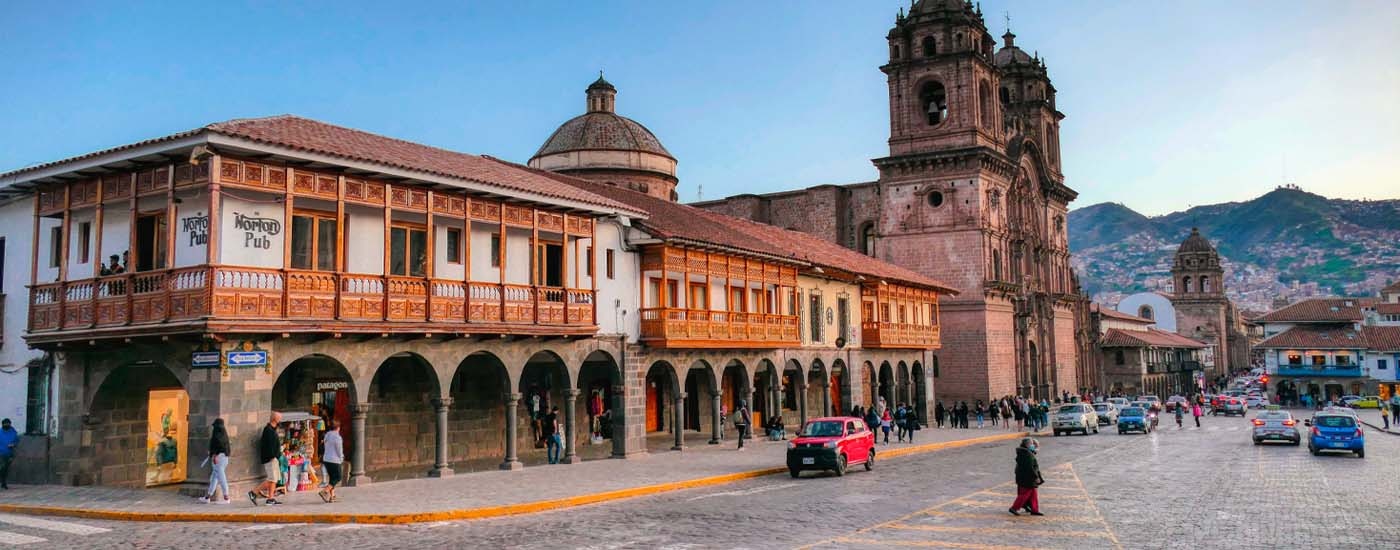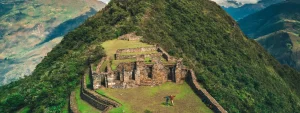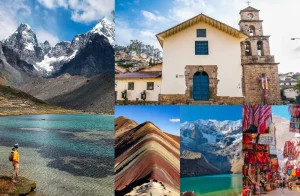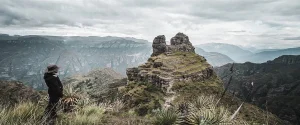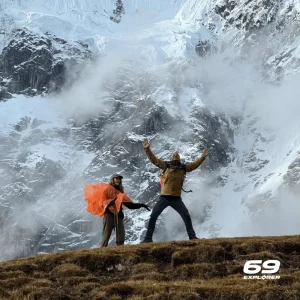Cusco, the imperial city of the Incas and one of the most unique cities in the world brims with history and culture. In the historical city center, there is a story to be told on every street and at every corner. Unless you are planning to spend a lot of time here in the city, it can be very difficult to visit all of the attractions in a short period of time. There is a deep rich history linked to all of the places of interest, and without a guide it is difficult to learn about these stories. Taking a guided tour of the city can be greatly a rewarding experience. Explore the city and learn the intricate history of the Inca taking a city tour of Cusco is a must!
Cusco City Tour Itinerary
Tours can be made up of two different sizes 1-6 people or 7-12 people and usually start in the morning around 9:00 AM or in the afternoon at 1:00 pm. Pick whichever time is more convenient for you. Your guide will pick you up in a private van at your hotel at your chosen time. Start at the most important temple in all of the Inca empire, Qorikancha, the temple of gold. The tour will continue to various different sites in the city before eventually dropping you off at your hotel. Depending on the group size the tour can vary in duration but, generally takes around 4 to 5 hours.
What to See, Visit and Exlore during the City Tour in Cusco?
Qorikancha
One of the most impressive structures in all of the Inca empire and the most important temple in the entire civilization. Qorikancha is an awe-inspiring stone structure dedicated to the worship of the Incan sun god “Inti”. Meaning Temple of gold in Quechua. Qorikancha was said to have been completely covered in gold plating in the times before the Spanish conquest of Cusco. Sadly, the gold was stripped to pay for the ransom of the Inca Atahualpa. Afterward it was completely looted and destroyed by the Spanish.
What remained of the temple was used as the foundation for a new Christian Temple. It would later be named “The Convent of Santo Domingo”. Today the colonial church sits on top of Qorikancha. You can enter Qorikancha for a fee of 10 soles per person. Additionally, visit the Qorikancha museum which lies underground in the field out in front of Qorikancha. The museum includes findings from the excavation of Qorikancha. There are many on display including artifacts and even some Inca Mummies.
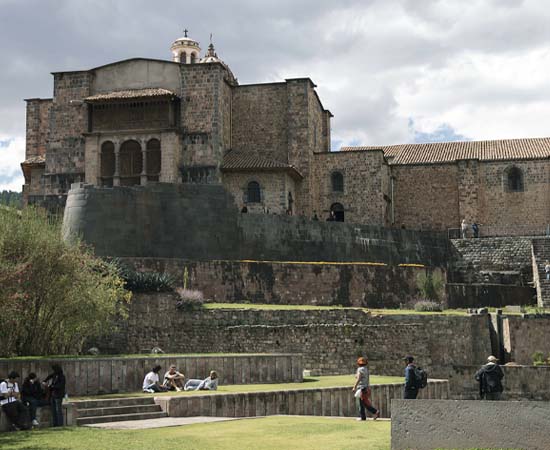
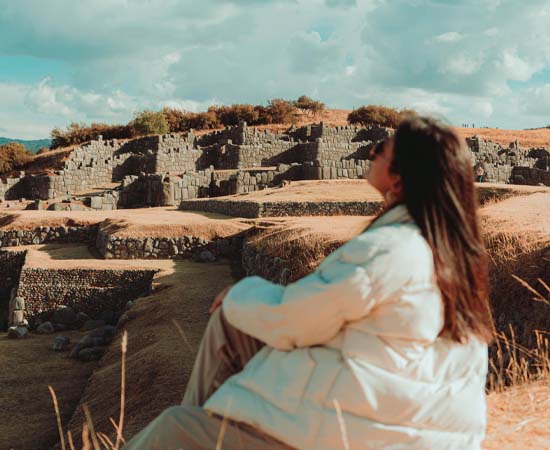
Sacsayhuaman
The largest fortress the Inca ever built; Sacsayhuaman lies just northwest of the center of Cusco. Made from giant monolithic limestone blocks construction started during the reign of Inca Emperor Pachacutec in the 15th century. It wasn’t completed until 16th century under Incan Emperor Huayna Cápac. The exact purpose of Sacsayhuaman is still uncertain but it’s theorized military forces may have been trained there. Additionly large festivals were said to have being held.
Your guide will take you through the complex and share all they know about the mysterious fortress. Be sure to ask all the questions you can think of, the guides are passionate about there heritage and history. The guides are always happy to share their culture. After exploring the site your guide will take you in a private van to the next destination.
Q’enqo
An archeological site above Cusco cut from bedrock Q’enqo is an Incan “huaca” and perhaps the most important in the empire. Huacas are holy sites where ceremonies and rituals would take place. In this particular huaca there’s an underground network of tunnels and an alter carved from the rock. It’s believed in these tunnels, mummies were prepared and animal sacrifices such as alpacas and llamas took place. Take a moment to appreciate that you’ll be in the same spot where the Incan Emperors were mummified hundreds of years ago.
The site is separated into two sections “Q’enqo grande” and Q’enqo chico. The Q’enqo grande section is home to one of the most mysterious parts of Q’enqo, the Intiwatana stone. Meaning where the sun is tied in Quechua Intiwatana is a large stone that’s believed to have been used to record time and astronomical events. Apart from the basic sundial function exactly what and how the stone was used is still a mystery.
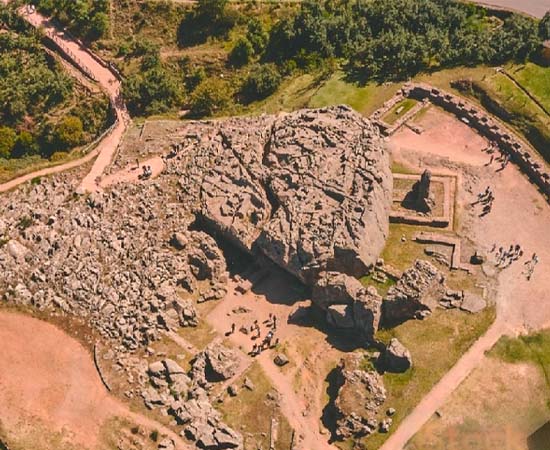
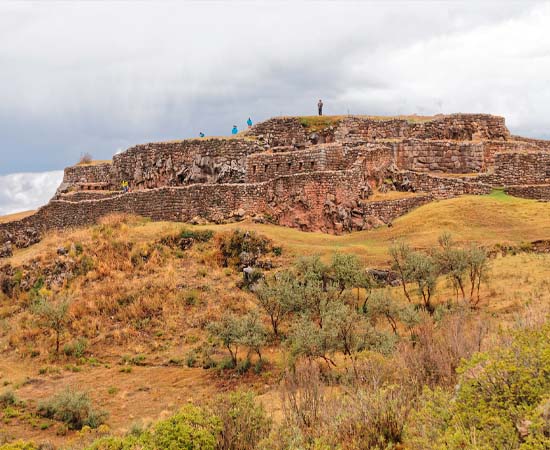
Puka Pukara
Located 10 kms north of the city center, Puka Pukara is an Inca archeological ruin that means “red fortress” in Quechua. The function of the site is still up for debate. It’s been widely accepted that Puka Pukara was used for administrative and military purposes. Located in a strategic position on one of the main paths out of Cusco. Puka Pukara has 360 views of the area. It could have served as a type of lookout point spotting travelers or invaders approaching Cusco.
Although the stone walls are grey in color now years ago the fortress had a pink color. At sunset it’s said the stone takes on a more pinkish hue. The walls are made from strangely different sized stones and look much different when compared to the precisely constructed structures of other sites in the region. Because of the construction it’s believed that Puka Pukara was built in a hurry.
Tambomachay
Also referred to as the “Bath of the Inca” this archeological Inca site served multiple purposes. Potentially a retreat for the political elite or a sacred site dedicated to the water cult. There are many different water features canals and fountains. Because every major holy temple in the Inca empire has some type of water feature it’s possible the function was purely religious.
The water is supplied from two nearby springs which have been diverged and channeled into three main waterfalls or fountains. Tambomachay is a great example of Inca engineering. The site is believed to have been built in the time of Pachacutec in the 15th century and the waters still flow even today.
This will be the last attraction on the tour after you guide will drive you back to your hotel dropping you of right at the front door.
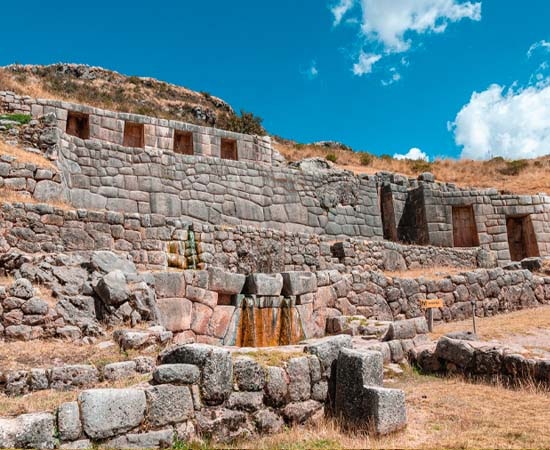
What’s included in the tour?
- Transportation: Private van to all locations
- Bilingual guide: Expert guides who speak both English and Spanish
- Pick up and drop off: The private van will pick you up and drop you off at your hotel
Not Included
- Entry to Qorikancha: You Will need to purchase your entry at the door 10 soles
- Boleto Turistico: This ticket allows entry into 16 different sites and is valid for 1 day 70 soles
- Food: Meals are not included make sure to eat before or after the tour
What to bring
- Water and snacks: To hold you over in case you get hungry
- Sun protection: Sunscreen and a hat to protect you from the sun
- Passport: In order to enter each site
- Money in soles: For souvenirs and tips
- Jacket or rain gear: In the Andes the weather can range from sunny to rainy in an instant
The Andean region as a whole is filled with history and rich culture and Cusco has been the center of activity for hundreds if not thousands of years. When planning your trip to the Imperial city of the Incas taking a guided tour provides you with valuable information and history that you would otherwise miss. Get the most out of your vacation by taking a guided city tour and dive deep into the mysterious history of the Inca.

